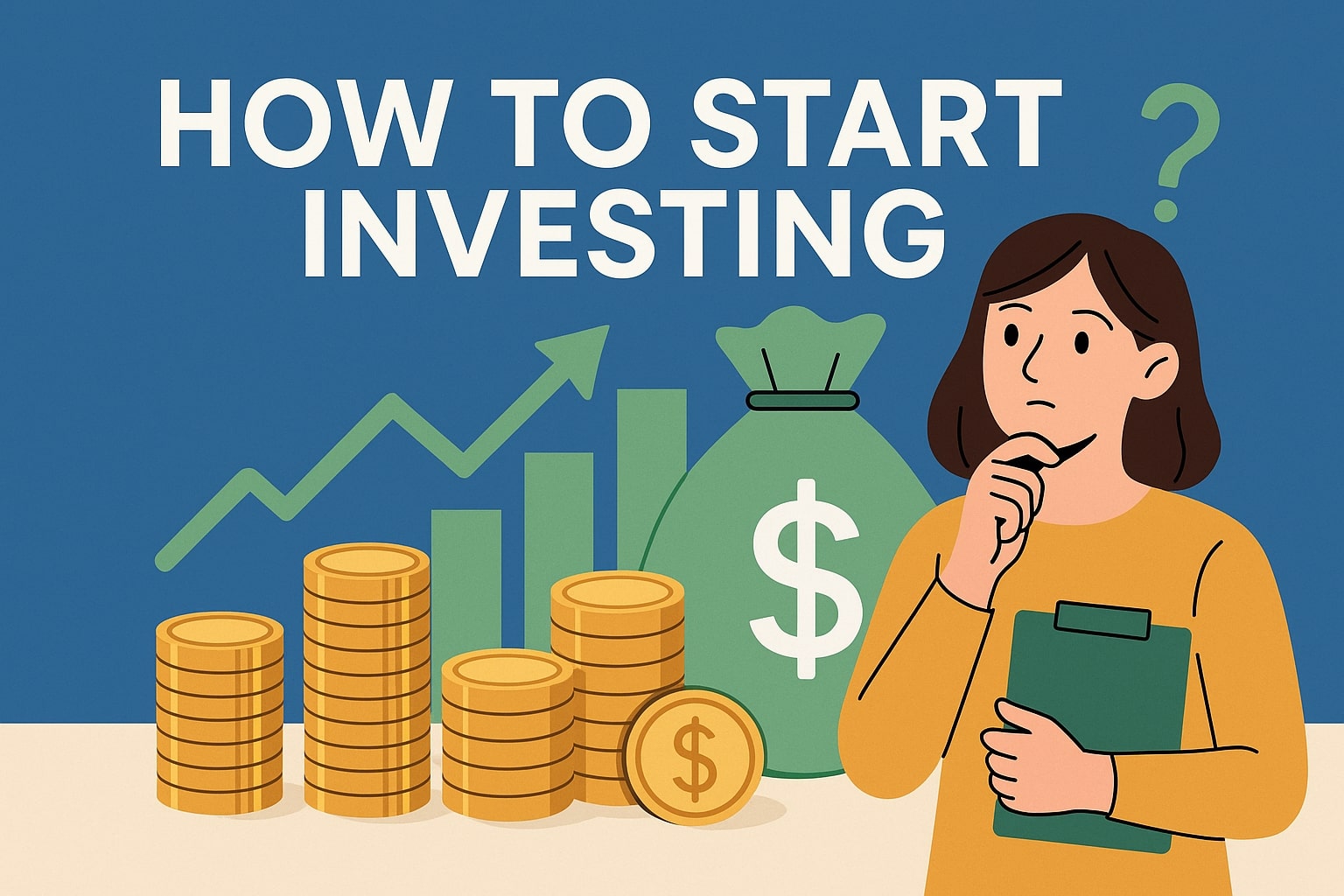What Are the Essential First Steps to Start Investing?
Before learning how to start investing, establish a solid financial foundation by paying off high-interest debt and building an emergency fund covering 3-6 months of expenses. This ensures you won't need to withdraw investments during financial emergencies, allowing your money to grow uninterrupted.
Choose a reputable broker or investment app that offers low fees and user-friendly interfaces for beginners. Many platforms now offer commission-free stock trading and fractional shares, making it possible to invest in expensive stocks with small amounts. Start with broad market index funds like the S&P 500, which provide instant diversification and historically strong returns. Set up automatic monthly contributions to build the habit of consistent investing, which is more important than timing the market perfectly.
📺 Featured Video

How to Invest for Beginners in 2025
by Mark Tilbury
Step-by-Step Investing Guide for Beginners
Before You Start:
- Emergency fund with 3-6 months expenses
- High-interest debt paid off (credit cards)
- Stable income source
- Basic understanding of risk tolerance
Step 1: Define Your Investment Goals
- Identify what you're investing for (retirement, house, etc.)
- Determine your time horizon (how long until you need the money)
- Assess your risk tolerance (conservative, moderate, aggressive)
- Set specific dollar amount goals
- Write down your investment plan
Step 2: Choose Your Account Type
- 401(k): Employer-sponsored, often with matching
- Traditional IRA: Tax-deductible contributions, taxed on withdrawal
- Roth IRA: After-tax contributions, tax-free withdrawals in retirement
- Taxable Brokerage: No contribution limits, more flexibility
- HSA: Triple tax advantage if used for medical expenses
Step 3: Select a Brokerage Platform
- Compare fees and commission structures
- Look for user-friendly platforms (Schwab, Fidelity, Vanguard)
- Check minimum investment requirements
- Ensure SIPC insurance protection
- Read reviews and compare features
Step 4: Open and Fund Your Account
- Gather required documents (ID, Social Security, bank info)
- Complete online application process
- Choose account type based on Step 2
- Set up automatic transfers from checking account
- Start with amount you're comfortable losing
Step 5: Understand Basic Investment Types
- Stocks: Ownership shares in companies (higher risk/reward)
- Bonds: Loans to governments/corporations (lower risk/reward)
- Mutual Funds: Professionally managed portfolios
- ETFs: Exchange-traded funds with low fees
- Index Funds: Passive funds tracking market indices
Step 6: Start with Index Fund Investing
- Choose broad market index fund (S&P 500 or Total Stock Market)
- Look for low expense ratios (under 0.20%)
- Start with 80/20 or 70/30 stock/bond allocation
- Consider target-date funds for hands-off approach
- Invest consistently regardless of market conditions
Step 7: Implement Dollar-Cost Averaging
- Set up automatic weekly or monthly investments
- Invest same amount regularly regardless of market conditions
- This reduces impact of market volatility
- Don't try to time the market
- Stay consistent for long-term success
Step 8: Diversify Your Portfolio
- Don't put all money in one stock or sector
- Consider international diversification
- Include both growth and value stocks
- Add bonds for stability as you age
- Rebalance annually to maintain target allocation
Step 9: Minimize Taxes and Fees
- Prioritize tax-advantaged accounts first
- Hold investments for over one year (long-term capital gains)
- Use tax-loss harvesting in taxable accounts
- Keep fees under 1% annually
- Avoid frequent trading and market timing
Step 10: Monitor and Adjust
- Review portfolio quarterly, don't obsess daily
- Rebalance when allocations drift 5+ percentage points
- Increase contributions when income grows
- Adjust risk as you approach goal dates
- Stay educated but avoid analysis paralysis
Common Beginner Mistakes to Avoid:
- Trying to pick individual stocks without research
- Emotional buying and selling during market swings
- Not diversifying properly
- Paying high fees for actively managed funds
- Stopping investments during market downturns
How Much Money Do You Need to Start Investing?
Understanding how to start investing doesn't require thousands of dollars upfront. Many brokerages now offer zero minimum account balances, and you can begin with as little as $1 through fractional share investing. If you have $100-500, consider starting with a diversified index fund that tracks the entire stock market.
For those with $1,000 or more, you can diversify across multiple index funds covering different asset classes like domestic stocks, international stocks, and bonds. The key principle is to invest only money you won't need for at least 5-10 years, as the stock market can be volatile in the short term but historically trends upward over longer periods. Focus on consistency rather than large lump sums - investing $100 monthly often yields better results than waiting to invest $1,200 once per year.
📺 Featured Video

Investing Tips for Beginners
by Mark Tilbury
What Investment Mistakes Should Beginners Avoid?
When learning how to start investing, avoid trying to time the market or pick individual stocks without proper research. Many beginners lose money by buying high during market euphoria and selling low during downturns. Instead, focus on dollar-cost averaging by investing the same amount regularly regardless of market conditions.
Avoid putting all your money into trendy investments like cryptocurrency or meme stocks until you understand basic investing principles. Don't chase last year's best-performing funds, as past performance doesn't guarantee future results. Most importantly, don't let fear of making mistakes prevent you from starting - the biggest risk is not investing at all and missing out on compound growth over time.
